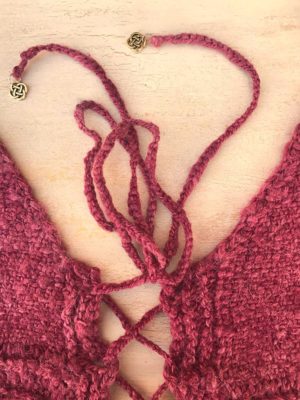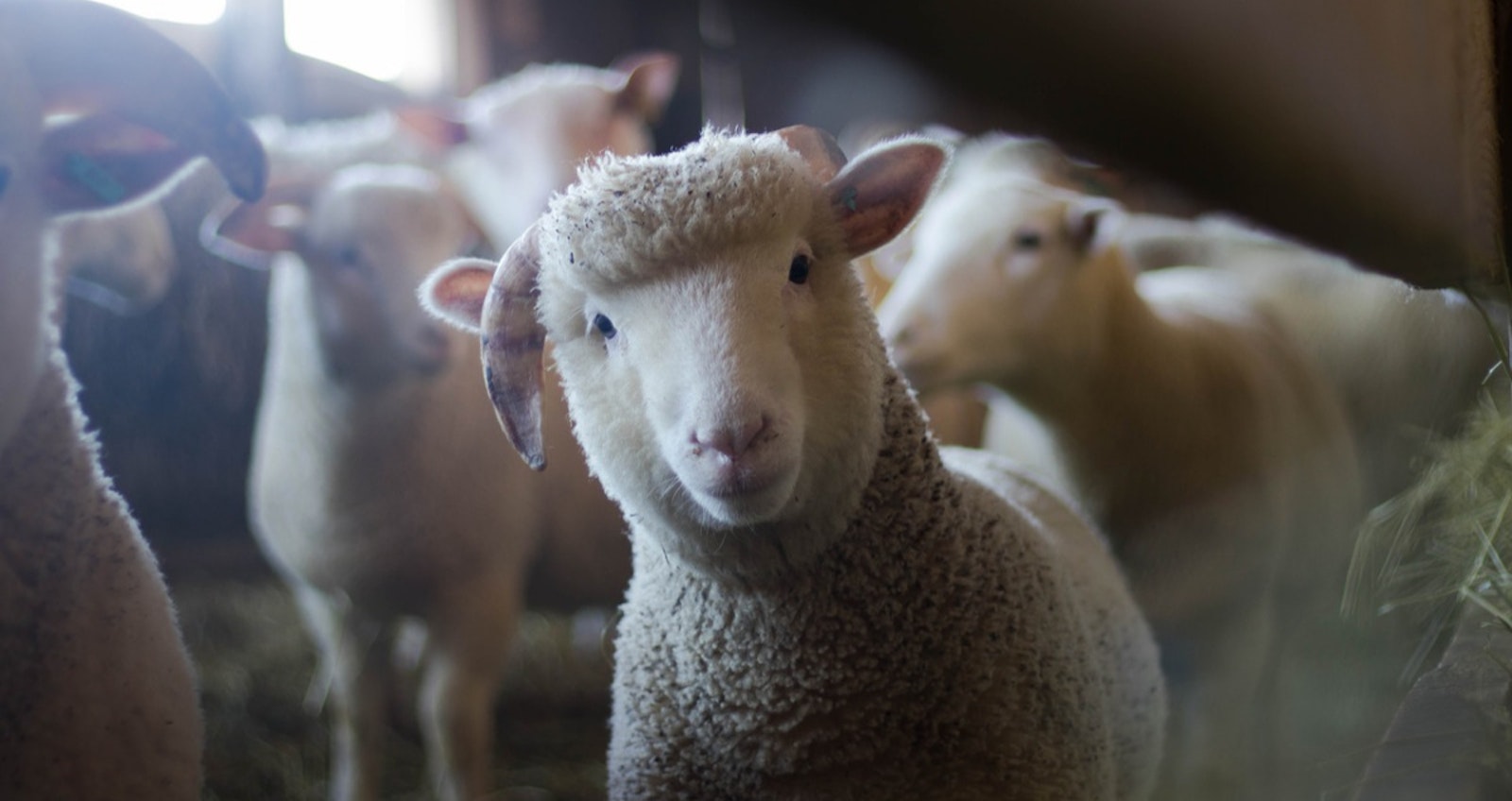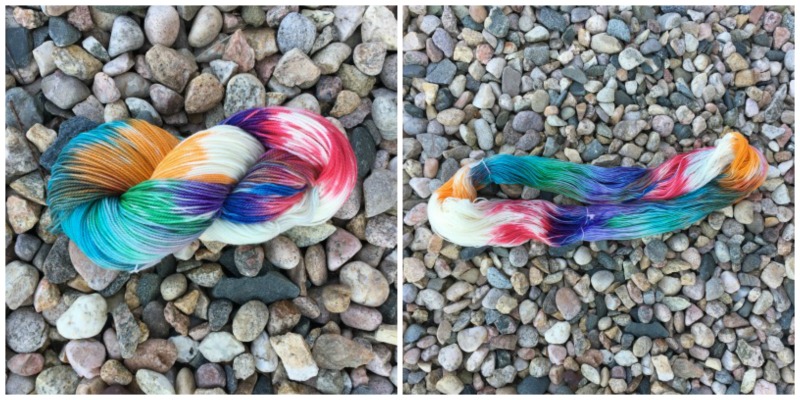Years ago at a stressful period in my life, I thought a new spinning hobby could help me relax and create pretty things with wool. Once that stressful period ended, I imagined I could walk away from spinning. Silly, silly me! Spinning--and all of its related activities such as fiber prep and dyeing--became a way of life. I could never give it up now. Here are all of my "Closet Full of Sheep" posts with my spinning to knit stories. I am excited to share them with you!
1. How to Build a Giant Yarn Stash for Less (HA!)
If you’re a knitter ready to learn to spin, get started with Kate Larson in her video Beginning Spinning on a Wheel. And if you’re a spinner ready to knit sweaters with your handspun yarn, Ann Budd’s The Knitter’s Handy Book of Sweater Patterns is a great resource for simple sweater patterns that you build based on your own gauge and body measurements. For those already rooted in both spinning and knitting, check out our new special issue, Spin + Knit. Let’s get started! Read more...
2. How to Spin and Knit with Control: Sample, Sample, Sample
Before we travel back to the beginning of my spinning-to-knit days, I’d like to show off one of my more recent finished creations: the Silversmith cardigan by Meghan Jackson. (I’m hoping this project will give me a little street cred. If I began the series with my first-ever garment, you’d never take my word on anything.) Read more...
3. Dyeing Lessons
My first dedicated spinning-for-garment project was a good one for learning new skills. A beautiful commercial top of merino and silk seduced me: I bought a pound and spun it into singles, set the twist, and planned to dye most of the skeins, setting aside one as an accent color in natural cream. I can no longer remember if I made the yarn first and then chose the knitting project, but that’s probably how it happened. I can guarantee that I didn’t exactly plan this yarn—it just kind of happened. The slubs are visible on this yarn’s fabric with or without a light source behind it! I don’t think I made a control sample and honestly, I had no control over my spinning at this point! Read more...
4. Running Before You Can Walk in Handspun Socks
After I completed my first handspun vest, socks became my next project. They seemed like the perfect companion to the vest, and I wanted to use up the last twenty-ish yards of leftover vest yarn, spun from commercial wool and silk top, so I bought more of the same fiber and began planning. Read more...

5. Textured Knitting Stitches and Handspun
Trial and error taught me a lot about dyeing yarn when I made my first handspun vest, and about plying when I made my first handspun socks. These lessons helped me on my second handspun vest, and then textured knitting stitches disguised less-than-perfect handspun yarn. Read more...
6. Surplice Sweater
When experienced spinners undertake a large project, they generally spend some time planning the yarn. They might even (gasp) try to match a commercial yarn or spin for a desired knitting pattern! As a beginner, I took a more haphazard approach, as we’ve seen from my first vest, first socks, and second vest. I just dove into the spinning, hoping that the resulting yarn could become something knit-worthy. Nowadays, even if I don’t decide on a knitting pattern before I sit down at the wheel, at least I plan the yarn. That habit began around 1997, and I’ve gotten much better at yarn design over time. Read more...
7. Handspinning for Lace: Another Pair of Socks
I hit the jackpot in Christmas 1997 or 1998: my mother gave me a lace flyer for my spinning wheel, and my fiber dealer friends sent me a few ounces of superfine merino top—the perfect fiber for spinning laceweight yarn! And I had the perfect pattern in mind, too: back in the day, Spin Off published a booklet of sock patterns that has since gone out of print. I’d fallen in love with one of the cover projects, Jean Sherman’s Lacy Arrow-patterned Socks. Read more...
8. How to Pet Your Sheep: Preparing Raw Fleece for Spinning
Today I present A Tale of Two Sheepies: the story of my first adventures with raw wool. (There were actually three sheep involved, but two were the same breed.) “It was the best of sheep, it was the worst of ignorance.” Although I didn’t always know what I was doing, trial and error got me through in the end. Read more...
9. Fiber Preparation for Spinning: Of Washing Machines & Drumcarders
My handspinning journey took some interesting turns after I moved to Kansas in 2000 and began teaching at a small university. Despite—because of?—the demands of my career, I kept playing with fiber. Since the university’s art department offered textile classes, I now had access to new some new toys and expert advice. These new resources came in handy as I contemplated processing a great big fleece that I had just acquired—earlier fiber preparation efforts had been fine for smaller amounts of raw wool, but they would take forever on a fleece so large. Read more...
Maggie’s wool has so far produced a handy bag with multiple pockets and a sweater.
10. How to Spin and Knit with Variegated Yarn
Spinners have many opportunities to see the world through rainbow-colored glasses. Since we possess so much control over our raw materials, we can incorporate colors before, during, or after spinning. I always love spending a day in my studio’s kitchen with dyepots, especially now that I’ve learned what types of dyes work best on protein fibers! But the spinning itself can get a little dull: the constant creation of white or cream yarn feels like driving along an endless highway. When I want to play with color during the spinning process, I get off that highway with one-of-a-kind batts or braids from indie dyers. (Someday when I get really ambitious, I’ll stash dyed top in a wide collection of colors, and then I can blend fiber in unique color combinations—Deb Menz and Judith MacKenzie have inspired me over the years with their superb books and videos. And stay tuned for future posts where I played with color before spinning.) Read more...
11. Closet Full of WHAT??: Spinning Bamboo & Dyeing Tencel
My closet contains more than just sheep: plants and even trees live there! When I began spinning twenty-some years ago, handspinners typically focused on protein fibers (wool, hair, silk—basically anything that comes from animals). Spinners who preferred cellulose fibers generally stuck to linen or cotton, since they were easy to acquire. Manufactured fibers involved more effort in those days: We had to look hard for retailers and then for reliable sources on how to spin, finish, and dye these yarns. Read more...
12. Yarn from Jack’s Back: Spinning Alpaca Yarn
My spinning studio (aka the living room) got a new inmate in the winter of 2010/2011: a drumcarder. I’d used one before, when preparing raw fleece from Maggie, but owning one, rather than borrowing, gave me much more freedom to play around. I could experiment like a mad scientist, sampling different ways to prep fiber and blend colors. It was a brand new spinning world! Mwahahahaha! Read more...
I did make two mittens, but one declined to be photographed for this post. The last tiny bit of Jack yarn became a hanging loop for my alpaca WPI tool.
13. Welcome to Fantasy Island: Spinning Exotic Fibers
After completing a big, dirty project—say, processing raw fleece and spinning yarn from Jack the very dusty alpaca—I like to imagine a lazy spinning vacation. Cabana boys stop by my lounge chair every hour with trays of frosty drinks and samples of luxury fibers that were hand-dyed at an indie workshop that also makes artisanal light bulbs (10 points if you get the reference). If there’s any better form of self-care than spinning exotic fibers, I have yet to discover it. My version of Fantasy Island holds a lot of spinning wheels. Read more...
14. Spinning Handpainted Roving: Color Techniques
Does your fiber stash look anything like mine? Boxes, bags, and baskets overflow with raw washed fleece (waiting to be processed); “mix-ins” such as cut-up sari silk, angora rabbit samples, handfuls of colored top, and small amounts of what I like to call blending fibers (waiting to be mixed in); batts and birds’ nests (waiting to be spun); and braid after braid of handpainted top. Seriously, why do I have so many braids? BECAUSE I LOVE THEM. When I want to focus on spinning rather than prep and/or I feel even lazier than usual, I indulge myself by spinning handpainted roving. Somebody else took some ready-to-spin fiber—maybe in an exotic blend—and worked out the colors. All I have to do is spin. Read more...
Left, Wingspan shawlette; right, Legolas scarflette.
15. Wool in the Kitchen: Handpainting Yarn with Food Coloring
Maybe you don’t play with yarn in every room of the house, but it’s a great way to learn some new tricks! My most hardcore spinning adventure to date lasted longer than 12 months, traveling from room to room: laundry, studio, living room, kitchen, and back to the living room. It began with raw fleece and ended with a favorite sweater. (Though technically, since I’m just now making a second sweater from this fiber, it still isn’t over!) The project drew upon my experience in scouring raw fleece, making batts with the drumcarder, and spinning a 2-ply yarn, but then I added another technique to my toolbox. I wanted a handspun sweater with dripping cables and subtle color transitions—that meant handpainting yarn with food coloring. Although this type of dyeing required a lot of time, it produced spectacular results. Read more...
16. Wild & Crazy Dyes: Dyeing Yarn with Food Coloring
Sometimes we spinners need to just let it go. Unless we’re completely spontaneous spinners, we make a lot of choices before or while we’re spinning, and usually it’s easy to see a direct line between our decisions and their effects on the yarn. I have celebrated the fact that spinning gives me total control over my materials. However, all that control flies out the window once I place some yarn or fiber in a dyepot. And that’s a good thing for me, personally and artistically. Serendipity takes me to places that I can’t image in my usual control freak mode. When I really want to surrender, I take out my cake-decorating supplies and start dyeing yarn with food coloring. Read more...
Crochet Project Editor Susanna Tobias didn’t want to toss her dyes after an egg-coloring session, so she used them on a skein of Plymouth Yarn’s Dye for Me Happy Feet.
17. Handspinning Textured Yarns: Art Yarns for Practical People
Art yarns impress me greatly and appeal to me visually, but they rarely appear in my spinning or knitting queues. I blame my utilitarian nature. After all, my spinning journey began with practical goals in mind: save money, feed my knitting habit, stock my closets with pretty clothes, artistically control my materials, occasionally let go of control. Making yarn for the sheer joy of it satisfies my soul, yet one corner of my brain always plans to do something with that yarn. (Probably because somebody always asks, “What are you going to make with that?” Seriously. While I was winding off the skeins discussed below, a coworker walked over to ask that very question.) Since cabled sweaters dominate my knitting queue, they don’t offer much incentive for handspinning textured yarns. On the flip side, however, I’m trying to schedule more spontaneity into my life, and breathtaking art batts on Etsy somehow find their way into my cart. At long last, I’ve hit upon a simple way to create textured yarns that I’ll actually use. Read more...
18. Sheep Breed Studies, Texture Techniques & Layered Dyes
Even after 21 years of handspinning, prepping fiber, dyeing, and knitting with my handspun, I still have so much to learn. Yet that learning process adds to the fun! And because it’s me, naturally I’ve systematized my learning process. First and foremost, I make a to-do list. My spinning queue holds more than specific projects; it includes techniques and research questions too. Over the next few years, I’ll pursue some sheep breed studies, study Felicia Lo’s dyeing lessons from Dyeing to Spin and Knit, and play around with yarn design (hopefully moving beyond my lazy excuse for art yarn into cabling, tailspinning, core spinning, and other cool techniques). Read more...
Deb Gerish





